Invisio has introduced a cover for their V20 Push-to-talk switch.
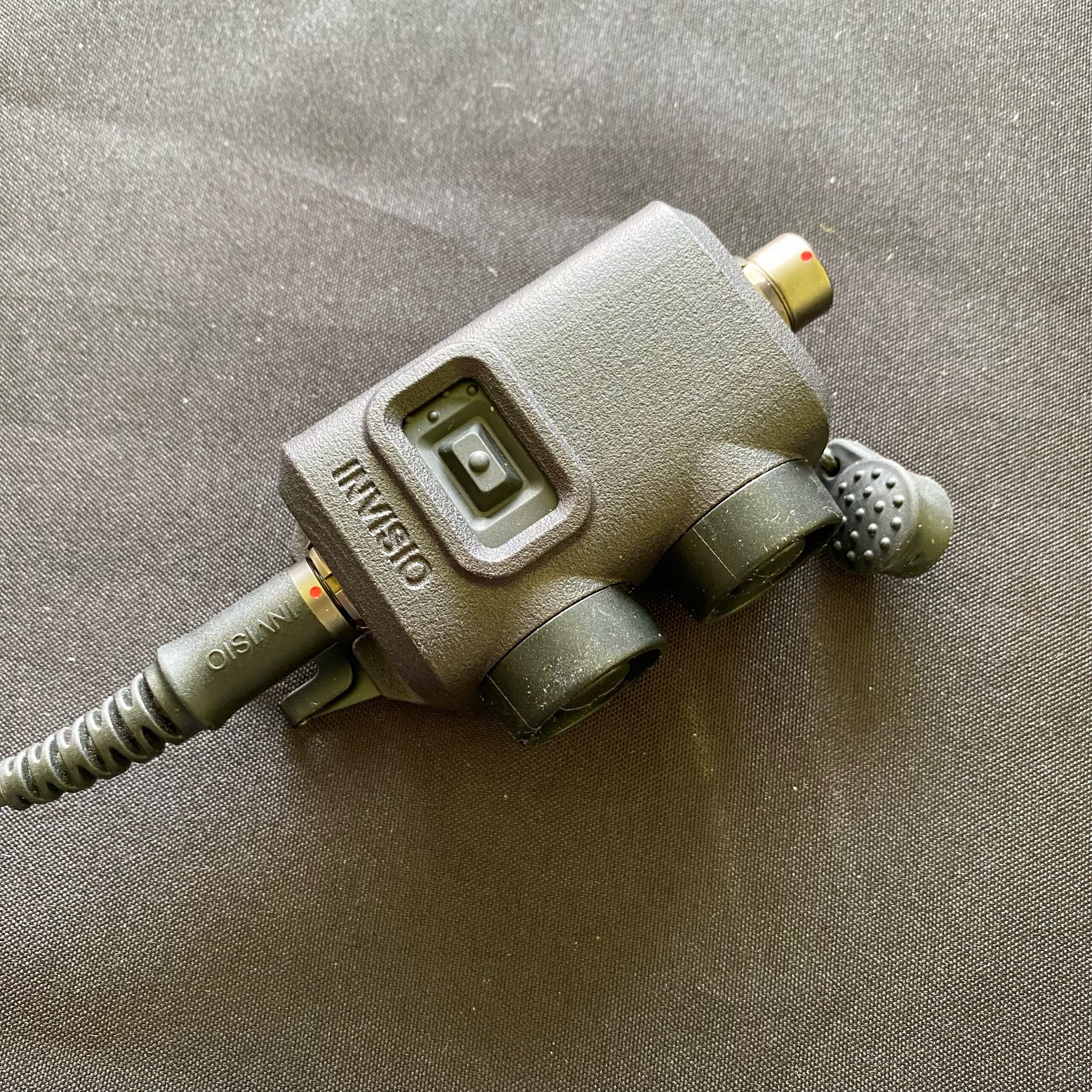
It offers larger buttons and increased protection for the V20.
Invisio products can be procured by agencies, departments, and units in Canada from Rampart International.
Invisio has introduced a cover for their V20 Push-to-talk switch.

It offers larger buttons and increased protection for the V20.
Invisio products can be procured by agencies, departments, and units in Canada from Rampart International.
Tampa Microwave is a Thales company and offers specialized communications systems like the new Raider Scout.
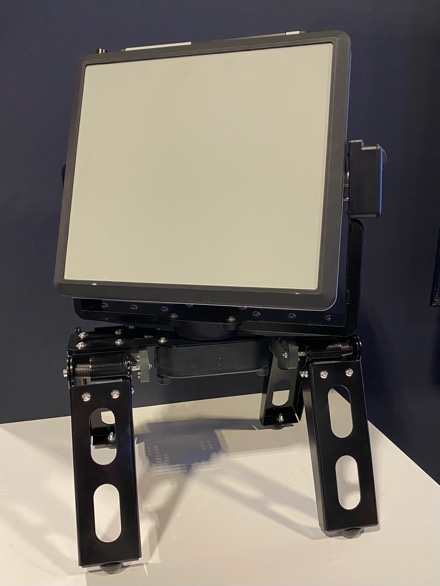
Raider Scout is a SATCOM terminal designed to be used by the non-Signaler which can be used with both INMARSAT and military satellites. You simply connect your end user device of choice. It weighs less than 35 pounds but offers four to five times the amount of bandwidth normally associated with such systems. With this asynchronous system you can expect 20 MB up and over 40 MB down.
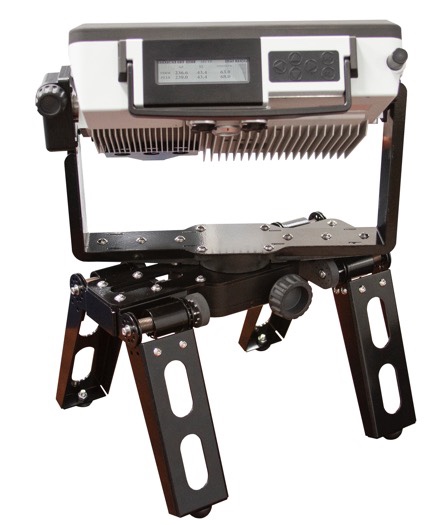
Highly mobile, the system can be set up within one minute and satellite acquired within five. Both training and operation is simple.
It is powered by an internal rechargeable battery offering up to 30 minutes of use per charge but can also be powered by an external power source such as a battery or shore power.
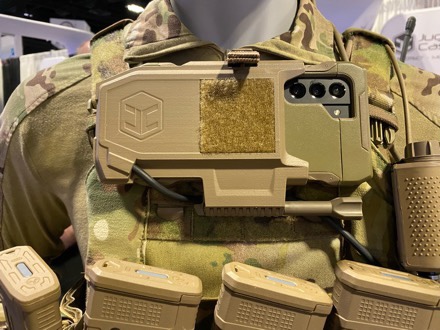
Juggernaut launched their new VELOX mount which is an USB-C Armor Docking Mount for your End User Device, serving as an ecosystem to facilitate ease of use regardless of cables associated with your EUD and radios.
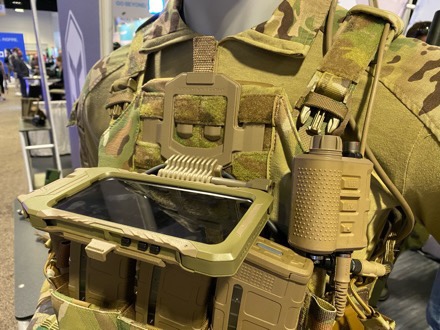
Tension can be adjusted to ensure your EUD stays where you want it and there is a soft bungee strap to keep it stowed when not needed.
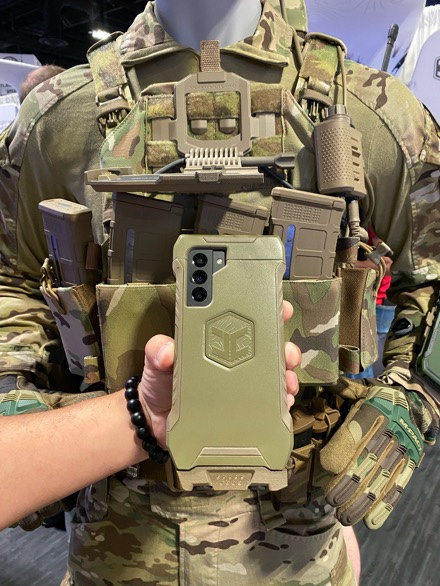
Not only is VELOX IP-68 certified, it is also EMI shielded and is compatible with Glenaire, ODU, and Omnetics connectors.
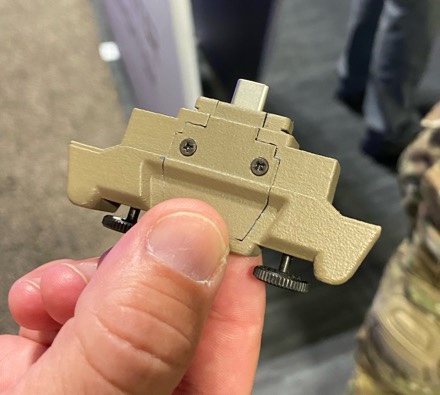
Also, it’s not only compatible with Juggernaut’s latest line up of cases, but it’s also backwards compatible.
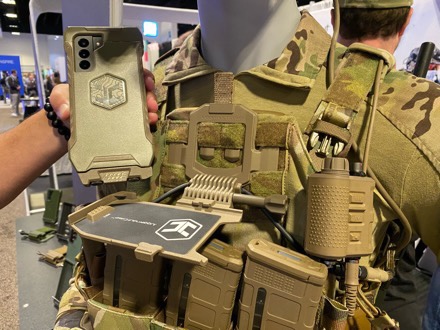
Finally, the pins on the case automatically align with the pins on the VELOX mount as you snap your EUD into place on the mount.
DoD and FAA certified for MC 130H and MC 130J variants, the RO/RO hatch-mount kit is a turnkey, cost efficient in-route communications package supporting the Special Operations community. The unique stand-alone solution requires no modification to the aircraft and can be quickly re-deployed from one aircraft to another depending on mission requirements.
At the heart of the package is Silvus’ StreamCaster 4400 Enhanced Mobile Ad Hoc Networking (MANET) radio. With 20 Watts of native transmit power (80 Watts effective thanks to a 6-decibel signal boost from Silvus’ proprietary Transmit Eigen Beamforming), the system is capable of establishing air-to-air and air-to-ground datalinks at distances well beyond 100 miles. The system supports dual S and C bands without swapping hardware and includes Spectrum Dominance waveform enhancements to provide users with interference avoidance, interference cancellation, spectrum analysis, and LPI/LPD capabilities.
“Working closely with the industry’s leading technology solution providers and side-by-side with the warfighter, R4 has quickly developed, integrated, and fielded the Silvus SC4400E MANET radio into an Ultra Lightweight Roll-On/Roll-Off C-130 Solution that met and exceeded customer expectations,” said John Parsley, President of R4 Integration, Inc. “This close collaboration and working relationship with key stakeholders has allowed us to rapidly increase the warfighters’ communications-on-the-move capability and demonstrate a proven, battle-ready solution.”
The Roll On/Roll Off (RO/RO) Mobile Network-MIMO Airborne Communications hatch-mount kit is now available. For more information, contact info@silvustechnologies.com or visit Silvus Technologies Booth 1453 at SOFIC.
MPU5 tactical networking device leverages advanced radio-over-IP tether to connect AN/PRC-148E Spear radio to mobile ad hoc network, delivering long sought-after warfighter capabilities
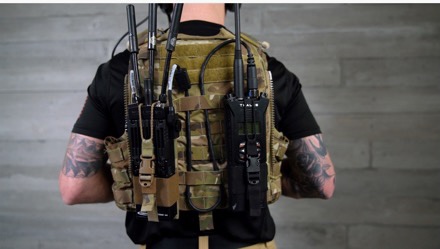
NEW YORK, N.Y.—May 11, 2022—Persistent Systems LLC (“Persistent”), a leader in mobile ad hoc networking (MANET) technology and Thales, a leader in tactical communication equipment, announced today that they will be showcasing a new combined tactical communications solution at the Special Operations Forces Industry Conference (SOFIC), held May 16-19 in Tampa, Florida.
The Department of Defense has long desired a solution that delivers both a MANET and a tactical radio, and whose combined capability exceeds the sum of its parts. The Persistent-Thales solution does that by leveraging an advanced radio-over-IP capability to tether an AN/PRC-148E Spear radio to an MPU5, thus bringing the Spear on to the digital network as an IP talk group.
“Imagine a helicopter transmitting on an AM frequency to a dismounted ground team,” said Shane Flint, VP of Business Development at Persistent. “With traditional tactical radios, some users might receive the helicopter’s transmission and other users might not. But with a Spear/MPU5-equipped team, if any single Spear radio receives the helicopter’s transmission, the entire team will receive it.”
The slender AN/PRC-148E Spear weighs only 1.24 pounds and has programmable cryptography that supports the requirements of the National Security Agency’s (NSA) crypto modernization program.
The Spear radio connects to the MPU5 MANET device via a specially designed cable. This integration allows the MPU5 to remotely auto-configure settings and channel presets on the Spear to ensure the tethered solution “just works,” eliminating operator error and delivering a true plug-and-play capability.
“This capability was designed for combat operations, based on real-world feedback,” said Flint, “The goal was to deliver a simple, no fail solution that empowers the warfighter.”
Both Persistent Systems (Booth No. 1435) and the Thales (Booth No. 1029) will be showcasing this new capability at SOFIC. This game changing capability delivers the “tactical network” that the Special Operations community has been requesting.
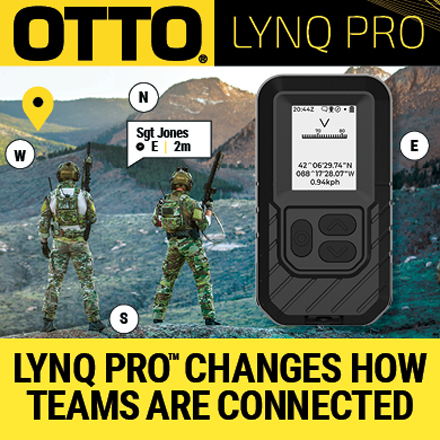
Capable of functioning stand-alone as a next-gen battlefield tracking solution, Lynq PRO™ augments ATAK EUDs with secure LPI/LPD transmissions and the ability to establish a common operating picture in multidomain operations. Personnel and unmanned systems can infiltrate contested environments against near-peer adversaries without detection and locate active or incapacitated teammates.
Need to meet a demand on the fly? Lynq PRO™ Deployment Kits help users create mission profiles to match the requirement. Using the included Raspbery Pi, operators can pair devices in groups, naming devices and groups separately, and deploy mission data en mass. Further, operators can issue secure keys on demand for unbreakable encryption.
![]()
Lynq PRO™ Deployment Kits support a multitude of use cases, including remote advise and assist, where operators issue Lynq PRO™ to local forces with selective features enabled — allowing operators to track, navigate, and communicate with locals, while their position remains unknown to the local forces. This provides security and strategic advantage — as well as unprecedented communication, tactics, and performance with local forces.
Operators can also track equipment, like motorcycles and other assets involved in jumps where bundles need their own parachute. Operators can use Lynq PRO™ to find their landed assets in the field by navigating to those devices — i.e., Bravo Six can navigate to “Bravo Six Bike” from within the Lynq PRO™ menu natively, no need to even use an ATAK EUD.
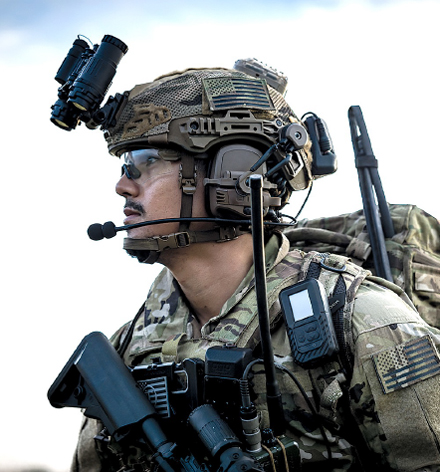
In comms denied or comms dark operations, where other comms are too noisy or unavailable, Lynq PRO’s 1W radio provides extended comms range for persistent positioning, navigation, and timing. Operators can maintain contact with each other via Lynq PRO’s self-forming network over broad areas, allowing for communication and navigation, without the need for ATAK, radio, or GPS.
This makes Lynq PRO™ perfect for remote advise and assist: Operators can issue Lynq PRO™ to local forces with selective features enabled, allowing operators to track, navigate, and communicate with locals, while our operators position remains unknown to the local forces. This provides security and strategic advantage – as well as unprecedented communication, tactics, and performance with local forces.
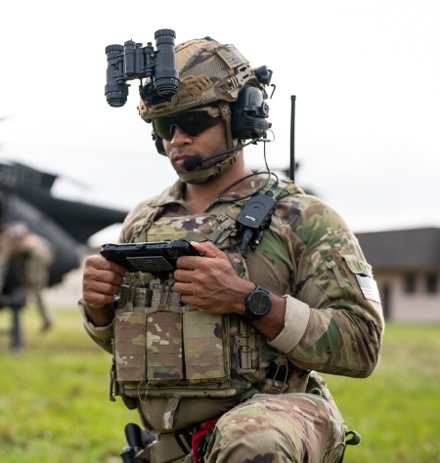
While deployed, Operators can push new waypoints and objectives to local forces on demand, without the need to regroup or communicate via radio. After issuing new waypoint information and instructions, Operators can monitor the movement of local forces via Lynq PRO™ or a connected ATAK EUD, ensuring locals are performing and increasing coordination and mission success probability.
Training exercises realize significant benefits with the addition of Lynq PRO™ for:
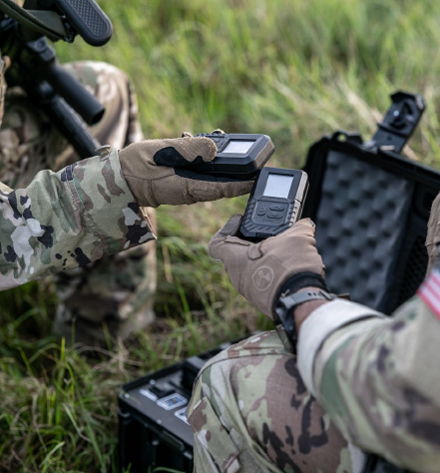
Lynq PRO™ provides hardware redundancy as a single-hardware unit doing the work of what has traditionally been three or more devices: radio, GPS, ATAK EUD. Lynq PRO™ augments these capabilities by extending an ATAK network to individuals that don’t necessarily need a radio or EUD, but can benefit the fighting force with location tracking, navigation, and messaging. These data points and abilities provided by Lynq PRO™ create an enhanced battlefield IQ for fighting forces, without the need and expense of deploying triple the equipment at a massive cost.
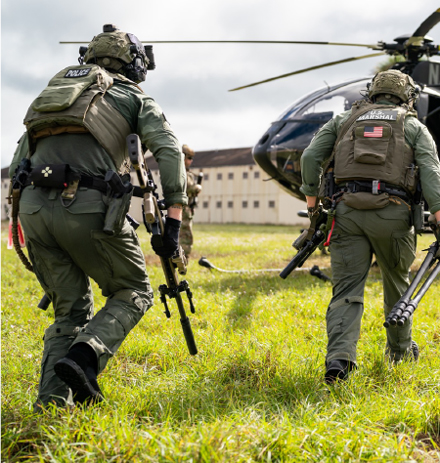
Perfect for joint- and multi-agency operations, Lynq PRO helps overcome comms incompatibilities when combining resources from state, local, and federal agencies – as even neighboring cities and counties often have diverse comms infrastructure. Lynq PRO™ succeeds where others fail bringing messaging features, as well as providing location awareness and navigational capabilities – allowing a diverse group of agencies to be more connected and communicative than ever before, with minimal investment and training.
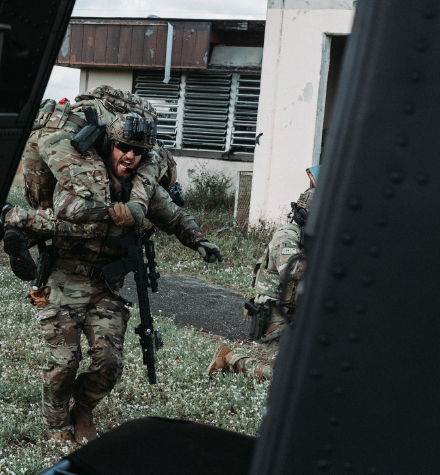
Lynq PRO™ works outside the military environment, allowing the benefits of persistent position, navigation, and timing to aid in wildland firefighting and search and rescue (SAR) operations. Using these abilities, firefighters and SAR teams can coordinate efforts, assist in man-down and rescue operations, and maintain a constant perspective on personnel position in the field.
Plus, Lynq PRO™ is designed for the future and is firmware upgradeable. As features develop, new capabilities are deployed via firmware update to enhance the capabilities of Lynq PRO™ for your teams. Overall, changing the way teams connect and share secure peer-to-peer location, data, and critical information for miles without networks or infrastructure, Lynq PRO™ is a force multiplier.
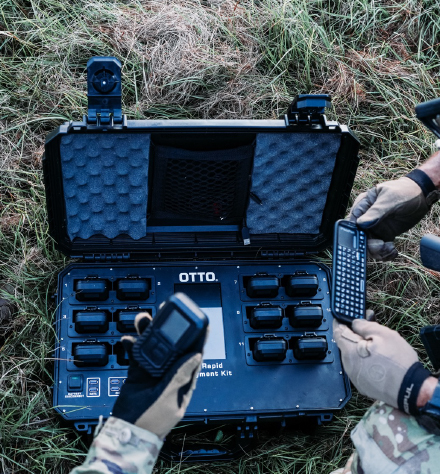
Lynq PRO™ Deployment Kits are available now from OTTO Communications. Visit OTTO at SOFIC Booth 2128, or contact OTTO today for more information or a Lynq PRO™ demonstration via www.otto-comm.com or 847-428-7171.
The RAID Plate is one of the most exciting Mrs pieces of gear I saw at Modern Day Marine.
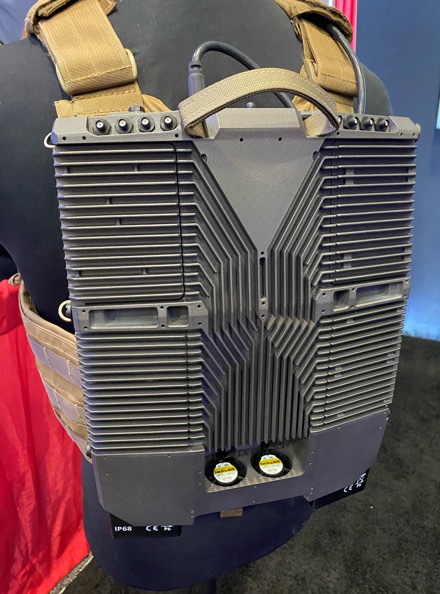
Designed and manufactured by Tomahawk Robotics, for the Marine Corps Warfighting Lab (MCWL) it is a body-worn edge processing capability with multiple Artificial Intelligence (AI) systems. Nvidia based CPU/GPU capabilities leverage best in class commercial technology for offline processing.
It combines everything into a single End-User Device, Controller, and control app for all robotic platforms significantly reduces cognitive burden of operating multiple UXVs. For new operators, this also decreases operator training time for Unmanned Systems to approximately 3-5 days.
Built with an open Modular Open System Architecture (MOSA), it is scalable and allows for the plug and play of various modules including up to four tactical radios or other controllers for unmanned systems, EW, and so on.
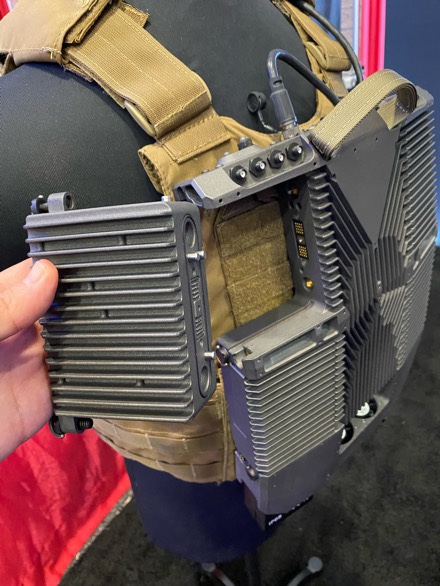
The system lightens the load by over 25 pounds when compared to the legacy equipment required to offer the same capability. It also consolidates that load into a more streamlined, body worn system with fewer cables and redundant batteries. Worn at rear of the body, RAID Plate also doesn’t compete for prime load carriage real estate. A PALs adapter panel can also be configured over the rear of the RAID Plate. It’s approximately 10″ wide and 13″ tall and just under 2″ thick.
It comes with the modules, required antennas, edge computing capabilities, the Grip universal common controller, Kinesis common control software, as well as Nett Warrior compliant power supply via standard GSA tactical radio batteries. The Kinesis common control software mentioned already works with 11 established UxV and growing and is maintained at no additional cost to the Government.
The Marine Corps is currently evaluating RAID Plate to determine where and how it is used to the greatest effect. If you’ve read Gunner Larose’s recent article on how the Marine Corps is making the Marine Infantry more lethal you can envision right where the RAID Plate capability will fit in.
L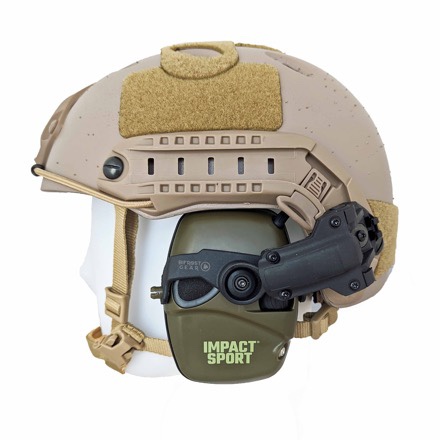
The Bifrost Gear COM-RAC allows operators to easily convert their Peltor Comtac, MSA Sordin, and Howard Leight Impact Sport headsets to work with the Ops-Core AMP Helmet Rail Mount Kit (RAC Arms).
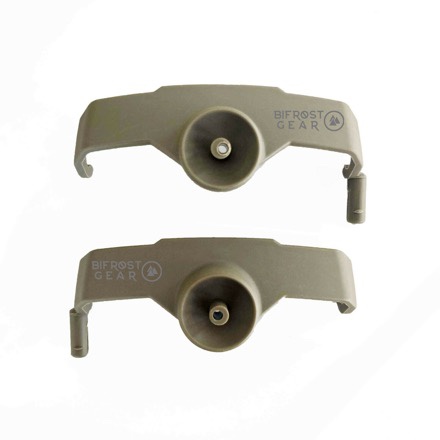
Features:
• Converts OPS-Core AMP arms to work with Peltor, Sordin, and Howard Leight Headsets and Earmuffs
• Lightweight but high strength mil-spec polymer
• Installs in seconds, no modifications to OPS Core AMP arms or headsets required
• Allows headsets to attach to rear dovetails on ARC rails
Models available for the following headsets:
• Peltor Comtac II / III / V / VI
• MSA Sordin / TCI Liberator / TEA High Threat (over the head versions)
• Howard Leight Impact Sport
Dealer inquiries and Government orders welcome